Welcome to “Behind the Beans,” where we delve deep into the lives of the farmers who grow the world’s cacao and coffee. From the lush mountains of Central America to the rich soils of Africa and South America, these smallholder farmers’ stories are as rich and complex as the crops they cultivate. Join me as we journey through the global landscapes that house these vital industries, exploring how culture, climate, and agriculture intertwine.
1. The Coffee Farmers of Colombia
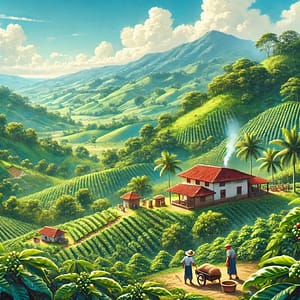
In the verdant hills of Colombia, coffee farming is a way of life passed down through generations. The Colombian coffee region, known as the Coffee Triangle, is renowned for its perfect coffee-growing climate and rich volcanic soil. Here, farmers like José Hernandez wake up before dawn, tending to their plants with a dedication that comes from a deep love and respect for coffee cultivation. “For us, coffee is not just a crop; it’s a part of our soul,” José explains. Despite facing challenges such as fluctuating market prices and climate change, these farmers remain committed, relying on both traditional methods and innovative techniques to sustain their beloved crops.
2. Cacao Cultivators of Ivory Coast
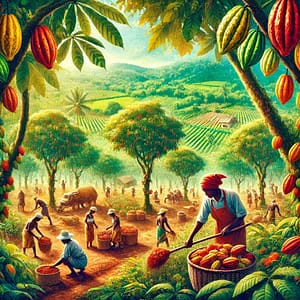
Ivory Coast is one of the largest cacao producers in the world, where the crop significantly influences the economy. In small villages, families work together to harvest the pods from cacao trees. Aminata Coulibaly, a local cacao farmer, describes the process with pride, from fermenting the beans to drying them in the African sun. “Every step is crucial to produce the best quality chocolate,” she says. However, the journey is not without its hardships. Issues such as child labor, underpayment, and environmental degradation cast shadows over the industry. Efforts are being made to implement more sustainable and ethical practices to improve conditions for farmers like Aminata.
3. Vietnamese Coffee Producers
Vietnam, a giant in the coffee industry, primarily grows robusta coffee, known for its strong flavor and higher caffeine content compared to arabica. Farmers in regions like Buon Ma Thuot engage in intensive coffee farming, which has transformed the local economy but also brought environmental challenges like deforestation and water scarcity. Nguyen Van Bao, a third-generation coffee farmer, discusses the balance between maintaining productivity and environmental health. “We have to take care of our land; otherwise, the land won’t take care of us,” he remarks. The introduction of sustainable farming practices is slowly changing the face of Vietnamese coffee production.
4. Coffee Growers of Ethiopia
Ethiopia, the birthplace of coffee, offers a unique look into the ancient and culturally rich traditions of coffee farming. In the misty forests of the Ethiopian highlands, coffee is still gathered from wild plants, and the entire community often participates in the harvest. Farmers like Mesfin Getachew practice semi-forest coffee farming, which helps preserve biodiversity and maintain the forest canopy. “Coffee here is more than a drink; it’s a ceremony,” Mesfin shares, highlighting the deep cultural significance of coffee in Ethiopian society.
5. The Cacao Farmers of Ecuador
Ecuador is known for its fine aroma cacao, which is highly sought after by chocolate connoisseurs worldwide. In the coastal region, smallholder farmers like Rosa Martinez focus on organic farming practices to enhance the unique floral notes of their cacao. Rosa explains the challenges of organic farming, including the need for more labor-intensive processes and the fight against common diseases. Still, the premium price fetched by high-quality organic cacao makes her efforts worthwhile. “It’s about quality, not quantity,” Rosa says, emphasizing the artisanal aspect of her work.
6. Indonesian Coffee Plantations
In Indonesia, islands like Sumatra, Java, and Sulawesi are famous for their distinct coffee varieties. Smallholder farmers in these regions face the dual challenges of maintaining the unique flavors of their regional varieties while combating the effects of climate change. Agus Setiawan, a coffee farmer from Sumatra, utilizes shade-grown techniques to protect his crops and preserve the local ecosystem. “It’s not just about growing coffee; it’s about sustaining our environment and our culture,” Agus explains.
7. Brazilian Cacao Groves
Brazil’s cacao production has seen a resurgence, with farmers in Bahia and Espirito Santo focusing on sustainable and organic practices. João Oliveira, a farmer in Bahia, integrates biodynamic farming methods to enrich the soil and improve the resilience of his cacao trees. “We are reviving traditional methods to meet modern demands,” João notes, highlighting a move towards more sustainable chocolate production that respects both nature and consumer health.
8. Peruvian Coffee and Cacao Farms
Peru offers a unique landscape for both coffee and cacao production, with its diverse climates ranging from the Amazon rainforest to high Andean mountains. Farmers like Elena Ramos cultivate both crops, often on the same smallholding. This intercropping practice not only maximizes land use but also enhances biodiversity, which is crucial for maintaining soil health and crop resilience. “Growing coffee and cacao together mimics the natural ecosystem, providing mutual benefits for the plants,” Elena explains. With a rising demand for organic and fair-trade products, Peruvian farmers are increasingly adopting sustainable practices that promise a better future for both the environment and their communities.
9. Costa Rican Coffee Fields
Costa Rica, known for its rich biodiversity and environmental awareness, also plays a significant role in the global coffee market. Its coffee is prized for its high quality and distinct flavor profiles that reflect the volcanic soil in which it grows. Farmers like Carlos Mendez focus on sustainable practices, including the use of organic fertilizers and the protection of local wildlife. “Our coffee is grown in harmony with nature,” Carlos says, emphasizing the importance of eco-friendly methods that enhance the sustainability of coffee farming in Costa Rica. These methods help ensure the continued health of their environment and the quality of their coffee.
Conclusion
The stories of these cacao and coffee farmers from around the world reveal the dedication, challenges, and rewards of cultivating these globally cherished crops. As consumers, understanding and appreciating the origins of our coffee and chocolate can lead to more ethical consumption choices. By supporting fair trade and sustainable practices, we can help ensure that the traditions and livelihoods of farmers like José, Aminata, Nguyen, Mesfin, Rosa, Agus, João, Elena, and Carlos are preserved for future generations.
Join us next time as we continue to explore the fascinating world of agriculture and the people who fuel our mornings and sweeten our treats.

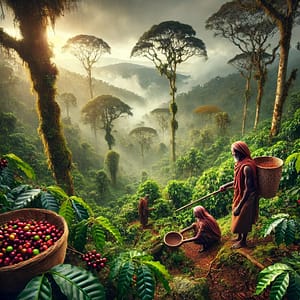

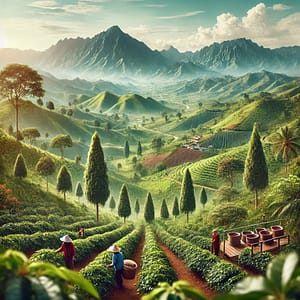


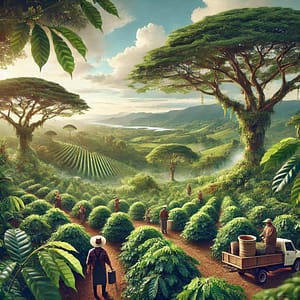

2 Comments
Herman · December 20, 2024 at 11:16 pm
This article provides a fascinating glimpse into the lives of farmers behind two of the world’s most beloved crops—cacao and coffee. Could you elaborate further on how consumers can contribute more directly to supporting sustainable practices? Additionally, are there any specific examples of successful initiatives or programs that have significantly improved conditions for these farmers?
Genie · December 24, 2024 at 11:19 am
This article sheds light on such an important topic—the lives of cacao and coffee farmers. I’m curious, how can consumers directly support these farmers beyond just buying fair-trade products? Are there specific initiatives or programs that have proven to make a significant difference in their lives? Thank you for bringing attention to this often-overlooked aspect of the industry!